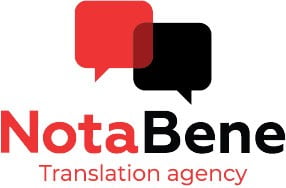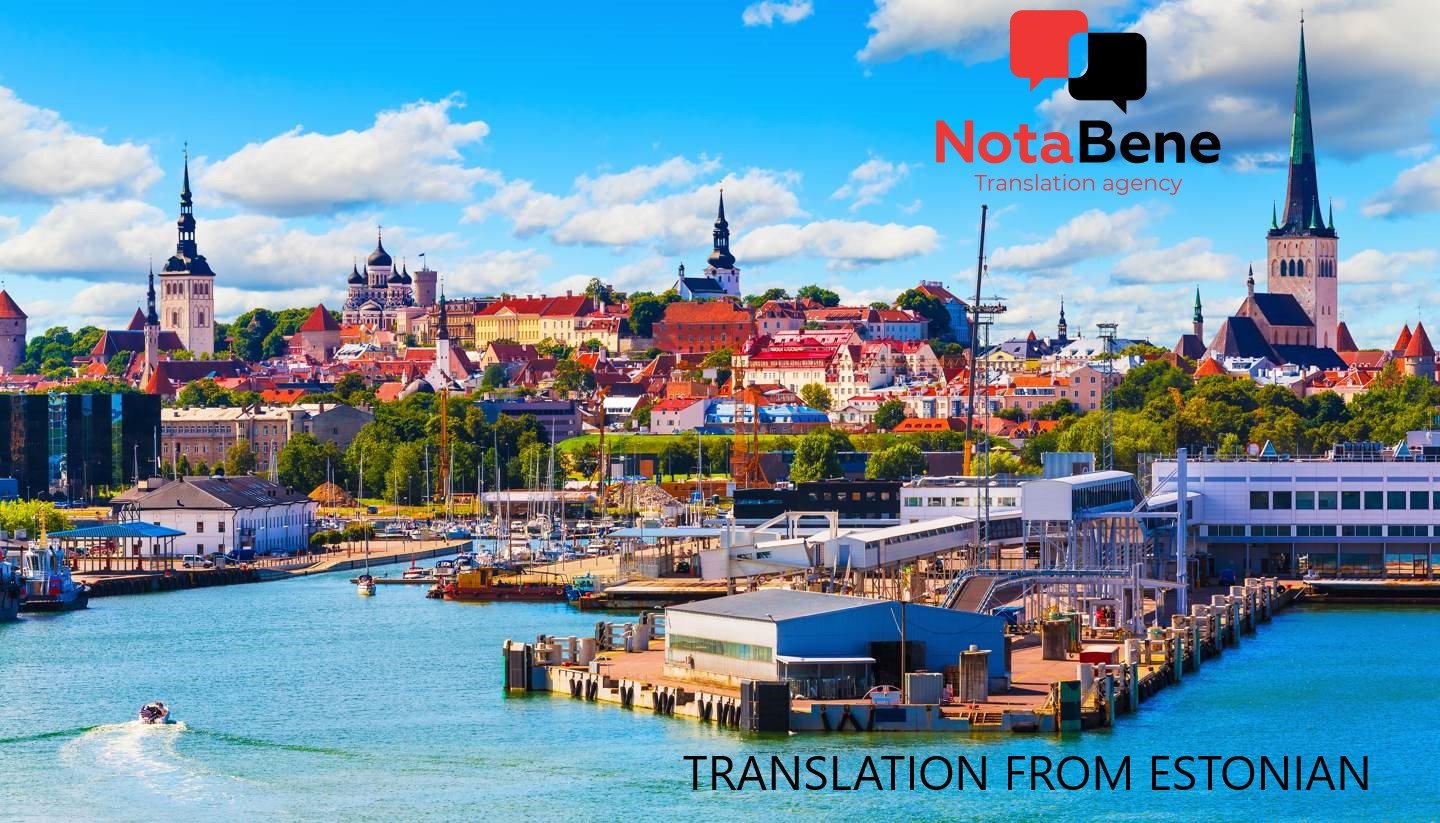Order translation from Estonian or into Estonian at NotaBene Agency in Warsaw and Gdansk!
NotaBene Translation Agency is an experienced supplier of translation from Estonian into Polish and vice versa for any documents or texts.
What types of texts does NotaBene Translation Agency work with?
– Technical translation from Estonian — we translate any texts in electronics, aviation and shipbuilding, agriculture, industry, oil and chemistry, etc. For this purpose, we pick translators who understand the specific nature of a given industry.
– Translations for the IT sector from and into Estonian for the localization of applications, games, software and websites.
– Medical translation from Estonian — books, manuals, articles in specialized printed and online publications, clinical records, correspondence with medical institutions, transcriptions and translations of test results, instructions for medicines and many other types of texts. This kind of translation requires flawless knowledge of medical terminology and focus on detail to rule out ambiguity, because the result can affect the health or life of many people.
– Legal translations: translation of corporate documents: statutes, registration deeds, articles of incorporation, contracts, powers of attorney, court records and many other similar documents.
– Financial translation: this type of translation includes the translation of balance sheets, tax returns, payment invoices, waybills, tender documents, etc.
– Literary or fiction translation is the translation from Estonian of fiction, marketing and advertising materials. Unlike the previous types of translation, in this case there is more room for a translator’s creativity, because there is no need for “word for word” translation. The most important thing is that the translated material produces the same impact as the original, while an excellent translation may even make it better.
Please note that the translation mentioned is certified by an agency seal only. If you need sworn translation, kindly notify your manager in advance. Sworn translation is possible only for certain languages.
How to have a translation from Estonian into English, Polish, Russian, Belarusian or Ukrainian?
First of all, you need to order it. To do so, send your source text and specify your requirements for the translation from Estonian. A customer service specialist at the Nota Bene Translation Agency will prepare a ToR based on the specific features of the order. If the project involves more than one job, a unique glossary is created to ensure the consistency and proper use of terminology.
An entire team of several professionals normally works on a job: a translator, proofreader, editor, quality controller, layout designer and manager who will be available during working hours. In order to rule out human errors, the translation agency uses modern services to check punctuation, idioms, numerical expressions, and formulas. The material is also reviewed by the chief editor.
Confidentiality of translated data is ensured by a special NDA, whenever a customer wishes to have one. Documents can be delivered to any country.
We very rarely apply additional fees for “urgency” or “specialized subjects”, so you can be sure that the price will not rise when the project is delivered. It is true that in rare cases, such as “we need to have it yesterday” instances, and when a customer is willing to pay a higher rate for the team to work outside normal working hours, at night or on weekends, the fee might be increased, but this is always negotiated with the customer in advance.
Estonian is a beautiful, melodious and very unusual language.
Estonian is spoken by about 1 million people, most of whom live permanently in Estonia itself.
Although Estonia is one of the Baltic countries, Estonian is not a Baltic language. Lithuanians and Latvians can understand each other, but Estonians certainly cannot. On the other hand, it can theoretically be understood by Hungarians. Estonian does not even belong to the Indo-European language family, but to the Finno-Ugric family, its closest language being Finnish.
No one can say exactly when the Estonian language was created. One thing is certain, it is quite old. In 98 AD, the Roman historian Publius Cornelius Tacitus mentions a tribe of Estonians living on the shores of the Baltic Sea. The first school where Estonian was taught to children was opened in 1680, when the territory of contemporary Estonia was part of Sweden.
In Estonia, there are several dialects, which sometimes significantly differ from each other.
A characteristic feature of the Estonian language is the occurrence of three types of vowels — short, long and very long. Changing the length of just one sound in a word can completely change its meaning.
Estonians like to double the letters and some words look very strange, e.g. Jääaja (ice age). There are also many words that have double consonants. For example, the word for “stop” in Estonian is spelled as stopp. An interesting feature of the language is also the obligatory dot after ordinal numerals.
In Estonian it is possible to form very long words. For example, for a long time the longest word was the palindrome “kuulilennuteetunneliluuk” with 24 letters. It means “thr flap closing the way of a bullet”. The absolute record belongs to “isapaabulinnusabakattesulesilmamunavärvabrikukuldväravaauvahtkonnaülemapühapäevaajakirinnataskusisevoodrivahe” with 114 letters. This is already complete nonsense about some peacock tail unfurling before the guards at the golden gate. It is because of this lack of meaning that the word has not been officially recognized as the longest word.
We have been in business for over 20 years and during that time we have learned to work well. Trust us with your translation from Estonian and get a great result at a reasonable price!








